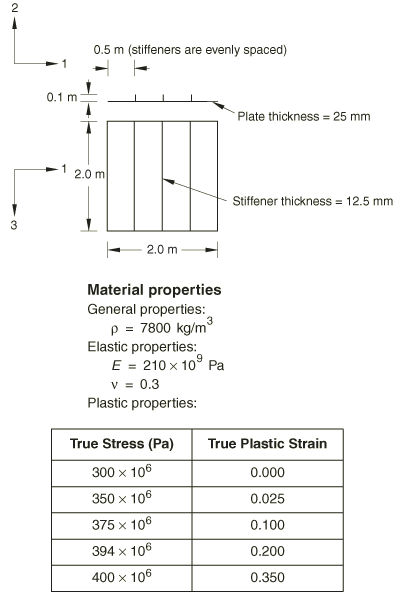Blast loading on a stiffened plate analysis | ||
| ||
The previous example illustrated some of the convergence difficulties that may be encountered when solving problems involving a nonlinear material response using implicit methods. We will now focus on solving a problem involving plasticity using explicit dynamics. As will become evident shortly, convergence difficulties are not an issue in this case since iteration is not required for explicit methods.
The plate is firmly clamped on all four sides and has three equally spaced stiffeners welded to it. The plate is constructed of 25 mm thick steel and is 2 m square. The stiffeners are made from 12.5 mm thick plate and have a depth of 100 mm. Figure 1 shows the plate geometry and material properties in more detail. Since the plate thickness is significantly smaller than any other global dimensions, shell elements can be used to model the plate.

The purpose of this example is to determine the response of the plate and to see how it changes as the sophistication of the material model increases. Initially, we analyze the behavior with the standard elastic-plastic material model. Subsequently, we study the effects of including material damping and rate-dependent material properties.